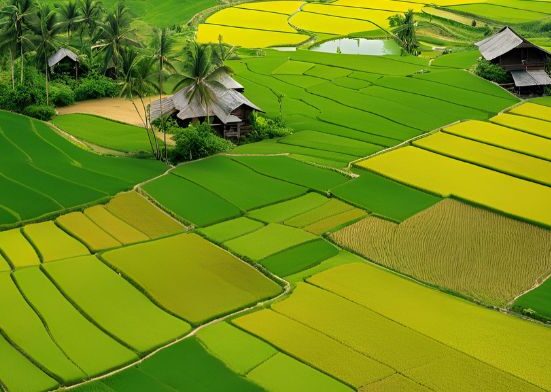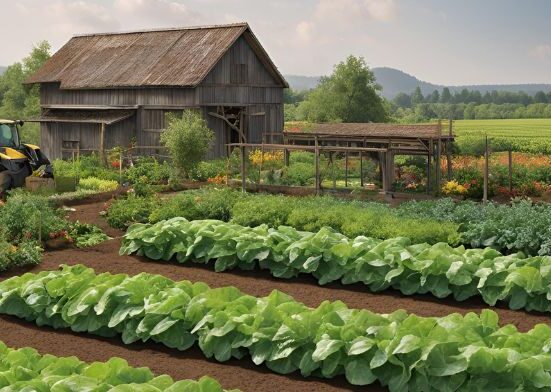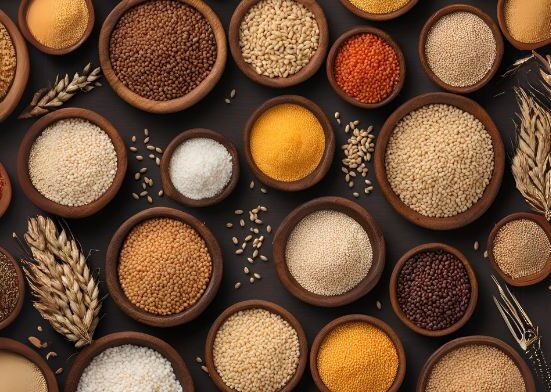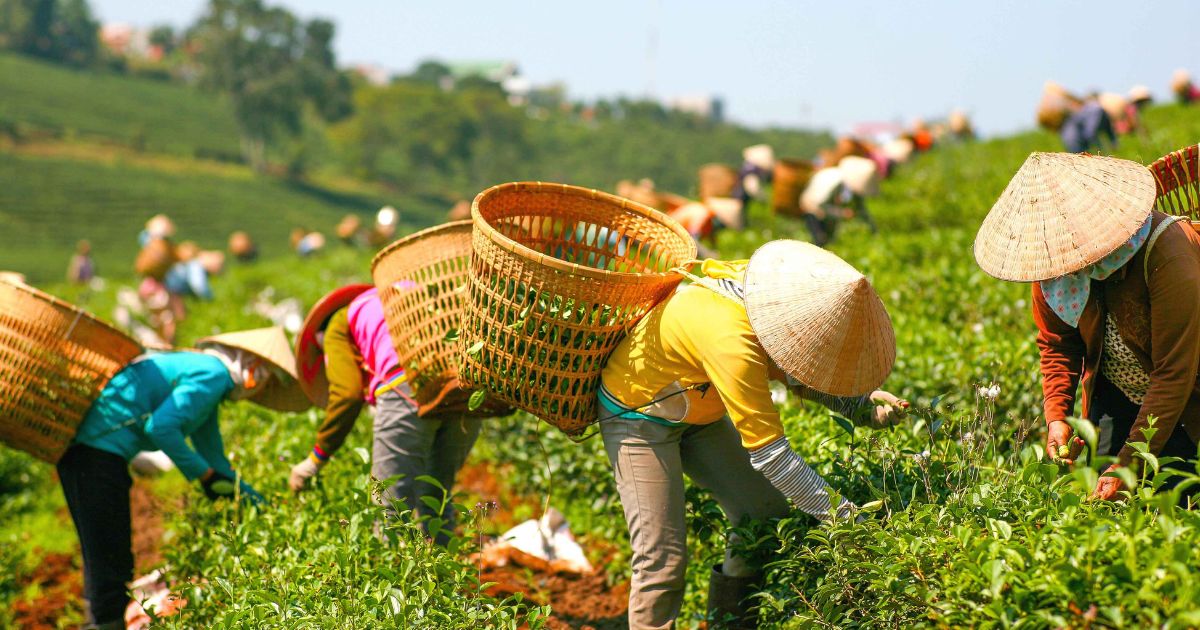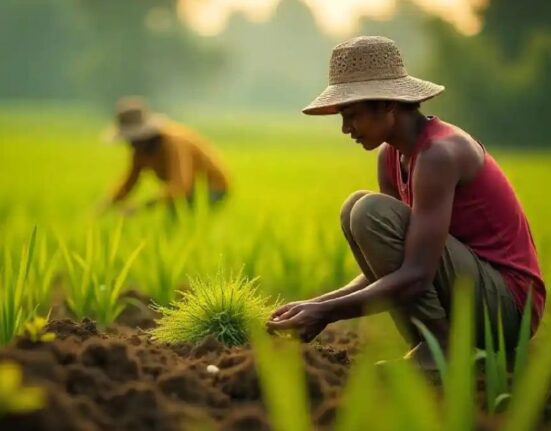In a world where industrial agriculture dominates food production and urban lifestyles are increasingly the norm, subsistence farming remains a steadfast and essential mode of living for millions. This guide, titled “Living the Land: A Look at Subsistence Farming,” explores the philosophy, practices, challenges, and rewards of a way of life deeply rooted in harmony with nature. Whether you’re a homesteader, a sustainable living enthusiast, or someone curious about simpler living, this guide offers a comprehensive overview of the time-honored tradition of subsistence farming.
What is Subsistence Farming?
Subsistence farming is a self-sufficient agricultural system in which farmers grow food primarily for their consumption rather than for sale or trade. This form of agriculture has existed for thousands of years and is still prevalent in many parts of Africa, Asia, Latin America, and rural communities in developed nations. Typically, a subsistence farmer cultivates a small plot of land, using traditional techniques and relying on family subsistence agriculture labor.
The goal is not profit, but sustenance—feeding oneself and one’s family. Crops such as maize, rice, potatoes, and vegetables are commonly grown, alongside the rearing of a few animals like chickens, goats, or cows. Unlike commercial agriculture, which emphasizes high yields and cash crops, subsistence farming is about meeting basic needs and maintaining ecological meaning Subsistence farming are sunflowers perennials balance.
Historical Context
Historically, all human societies began as subsistence farmers. Before the advent of mechanized agriculture and global trade, communities relied on what they could grow, hunt, or gather in their immediate environment. While industrialization shifted many to urban centers and wage-based economies, large portions of the world, especially in rural Africa, Asia, and Latin when is peach season America, continue to depend on subsistence subsistence farming definition farming.
The Appeal of Subsistence Farming
In recent years, there’s been a resurgence of interest in self-reliant living. Climate change, economic instability, and the COVID-19 pandemic have highlighted vulnerabilities in global food systems. As a result, more people are turning to backyard gardens, subsistence farming examples homesteads, and small-scale hybrid farming farming. Subsistence farming.
The Basic Elements of Subsistence Farming
 Subsistence farming is a traditional agricultural system focused on producing just enough food to meet the needs of the farmer’s family, with little or no surplus for trade. The basic elements of subsistence farming include small-scale cultivation of crops such as maize, rice, or millet, depending on the region. Farmers rely mainly on manual labor, simple tools, and natural rainfall rather than mechanized equipment or irrigation. Livestock, such as goats, chickens, or cattle, often complement crop production, providing food, labor, and manure for fertilization.
Subsistence farming is a traditional agricultural system focused on producing just enough food to meet the needs of the farmer’s family, with little or no surplus for trade. The basic elements of subsistence farming include small-scale cultivation of crops such as maize, rice, or millet, depending on the region. Farmers rely mainly on manual labor, simple tools, and natural rainfall rather than mechanized equipment or irrigation. Livestock, such as goats, chickens, or cattle, often complement crop production, providing food, labor, and manure for fertilization.
Crop rotation and intercropping are common practices to maintain soil fertility and reduce pests. The farming activities are typically seasonal, influenced by climate and environmental conditions. Subsistence farming emphasizes self-sufficiency, with minimal reliance on external inputs. This method supports rural communities but often limits economic growth and is vulnerable to environmental changes, making it crucial to blend traditional knowledge with sustainable improvements for long-term food security.
Land and Soil Management
Land and Soil Management involves the sustainable use, conservation, and improvement of land resources to ensure productivity and environmental health. It encompasses practices that maintain soil fertility, prevent erosion, control pollution, and optimize water retention. Effective management balances agricultural needs with ecological protection, promoting crop growth while preserving biodiversity. Techniques include crop rotation, contour farming, cover cropping, and organic amendments.
Proper land and soil management also addresses challenges such as land degradation, desertification, and climate change impacts. By maintaining soil structure and nutrient cycles, it supports food security and ecosystem resilience. Overall, it is a critical discipline for sustainable agriculture, environmental stewardship, and long-term land productivity, benefiting both current and future generations.
Crop Selection
Crop selection refers to the process of choosing the most suitable crop varieties to plant based on factors like climate, soil type, water availability, and market demand. Effective crop selection is essential for maximizing yield, ensuring sustainable farming, and minimizing risks related to pests, diseases, and adverse weather. Farmers consider aspects such as growth duration, resistance to environmental stress, nutritional needs, and profitability when selecting crops.
Additionally, crop selection supports crop rotation practices, which help maintain soil health and fertility. By carefully selecting crops adapted to local conditions, farmers can optimize resource use, improve food security, and contribute to environmental conservation. Ultimately, crop selection plays a vital role in achieving successful and sustainable agricultural subsistence agriculture examples production.
Water Management
Water is crucial for crop survival. Subsistence farmers often rely on rainfall, but in drier areas, rainwater harvesting, mulching, and drip irrigation can be lifesavers. Animals provide meat, milk, eggs, manure, and even labor. Chickens, goats, pigs, and cows are common. Integrating livestock into the farm cycle enhances intensive subsistence agriculture.
Tools and Techniques
While machinery is limited in subsistence farming, hand tools such as hoes, machetes, and spades are indispensable. Innovations like permaculture and agroecology offer valuable guidance. Timing is everything. Planning according to the seasons ensures a continuous supply of food. Understanding local climate patterns and frost dates helps optimize planting and harvesting subsistence farming meaning schedules.
The Philosophy Behind Subsistence Farming
At its core, subsistence farming is more than a method of food production; it is a philosophy and a lifestyle. It embodies values such as self-reliance, sustainability, community, and respect for nature. Many subsistence farmers see themselves as stewards of the land rather than owners. Their approach to agriculture is holistic, considering the long-term health of the soil, water, and local ecosystem. Living off the land requires a deep understanding of seasonal cycles, plant and animal behavior, and natural resource management. It also fosters a closer relationship with food, where every meal represents the fruits of one’s labor and a connection to the defined subsistence farming earth.
Key Practices in Subsistence Farming
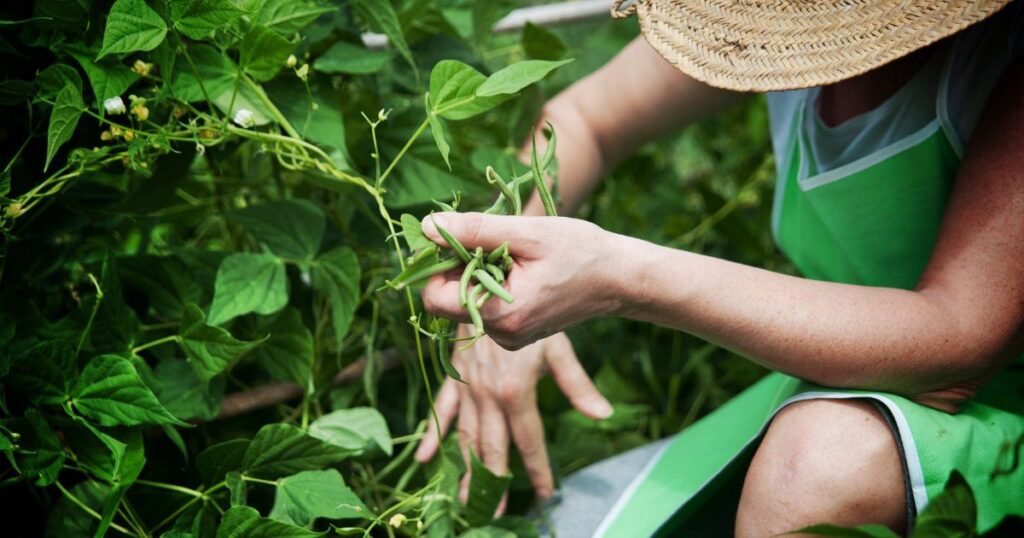 Subsistence farming is a traditional agricultural practice aimed at growing food primarily for the farmer’s family rather than for commercial purposes. Key practices in subsistence farming focus on maximizing self-sufficiency, sustainability, and efficient use of local resources. One fundamental practice is mixed cropping, where farmers cultivate different crops together, which helps reduce the risk of total crop failure and improves soil fertility by diversifying nutrient use. Another important practice is crop rotation, where different crops are planted sequentially on the same land to maintain soil health and prevent pest subsistence crop buildup.
Subsistence farming is a traditional agricultural practice aimed at growing food primarily for the farmer’s family rather than for commercial purposes. Key practices in subsistence farming focus on maximizing self-sufficiency, sustainability, and efficient use of local resources. One fundamental practice is mixed cropping, where farmers cultivate different crops together, which helps reduce the risk of total crop failure and improves soil fertility by diversifying nutrient use. Another important practice is crop rotation, where different crops are planted sequentially on the same land to maintain soil health and prevent pest subsistence crop buildup.
Subsistence farmers often rely on organic manure and composting rather than chemical fertilizers, which helps preserve soil quality and supports environmental sustainability. Selective weeding and pest control using natural methods like companion planting or locally available biopesticides are also common to protect crops without harming the ecosystem. Additionally, subsistence farmers practice seed saving, preserving seeds from one harvest to plant in the next season, which reduces dependence on external inputs. Water conservation techniques, such as rainwater harvesting and traditional irrigation, are crucial in managing limited water resources. Overall, these practices enable subsistence farmers to maintain food security, preserve the environment, and sustain their livelihoods even under resource what is subsistence agriculture constraints.
Benefits of Subsistence Farming
- Food Security: By producing their food, subsistence farmers are less dependent on market fluctuations and global supply chains.
- Low Environmental Impact: Small-scale, diverse farming practices are often more environmentally sustainable.
- Economic Independence: While not cash-rich, subsistence farmers often have lower living costs and are less tied to monetary systems.
- Cultural Preservation: Subsistence farming helps maintain traditional agricultural knowledge and local food customs.
- Health and Nutrition: Homegrown food is typically fresher, less processed, and more nutritious.
Challenges Faced by Subsistence Farmers
Subsistence farmers, who grow food primarily to feed their own families, face numerous challenges that hinder their productivity and livelihood. One major issue is limited access to modern agricultural tools and technology, which restricts their ability to increase crop yields efficiently. They often rely on traditional methods that are labor-intensive and less productive. Climate change and unpredictable weather patterns, such as droughts and floods, further threaten their fragile crops, leading to food insecurity.
Poor soil quality and lack of access to fertilizers also diminish their farming potential. Additionally, subsistence farmers frequently struggle with limited access to markets and fair prices for any surplus produce, trapping them in poverty. Inadequate infrastructure, such as roads and storage facilities, contributes to post-harvest losses. Social factors, including lack of education and financial resources, restrict their ability to adopt improved farming practices. These challenges combined make subsistence farming a precarious livelihood.
Challenges of Subsistence Farming
Challenges of subsistence farming include limited resources, such as a lack of modern tools, seeds, and fertilizers, which reduce productivity. Farmers often depend heavily on unpredictable weather, making crops vulnerable to droughts or floods. Soil fertility tends to decline due to continuous farming without proper replenishment. Additionally, subsistence farmers usually have limited access to markets, credit, and education, restricting their ability to improve farming techniques or income. Pests and diseases also pose significant threats, while poor infrastructure hampers transportation and storage. These challenges keep subsistence farmers trapped in poverty, struggling to produce enough food for their families and survive definition subsistence farming economically.
Modern Adaptations and Innovations
Today, many subsistence farmers incorporate modern innovations to improve productivity without compromising sustainability. Examples include:
- Solar Power: Used for lighting, water pumps, and electric fences.
- Mobile Technology: Smartphones help farmers access weather forecasts, market information, and agricultural tips.
- Agroforestry: Integrating trees into farms for shade, soil health, and additional crops.
- Permaculture: Designing agricultural systems that mimic natural ecosystems.
These adaptations demonstrate that subsistence farming is not stuck in the past but can evolve while retaining its core principles.
Is Subsistence Farming Right for You?
Subsistence farming is a traditional agricultural practice where farmers grow food primarily to feed themselves and their families, rather than for commercial sale. This approach can offer a sustainable lifestyle with a close connection to nature, lower costs, and self-reliance. If you value independence, enjoy working outdoors, and want to reduce reliance on external food sources, subsistence farming might suit you. However, it demands significant labor, basic farming skills, and often limited income opportunities.
It may not be ideal if you seek a high-profit business or modern conveniences. Additionally, the yield depends heavily on weather and soil conditions, posing risks to food security. Before committing, consider your goals, resources, and willingness to adapt. Subsistence farming can provide a fulfilling, eco-friendly way of life, but requires dedication and resilience. Reflect on these factors to decide if they align with your lifestyle and values.
A Day in the Life of a Subsistence Farmer
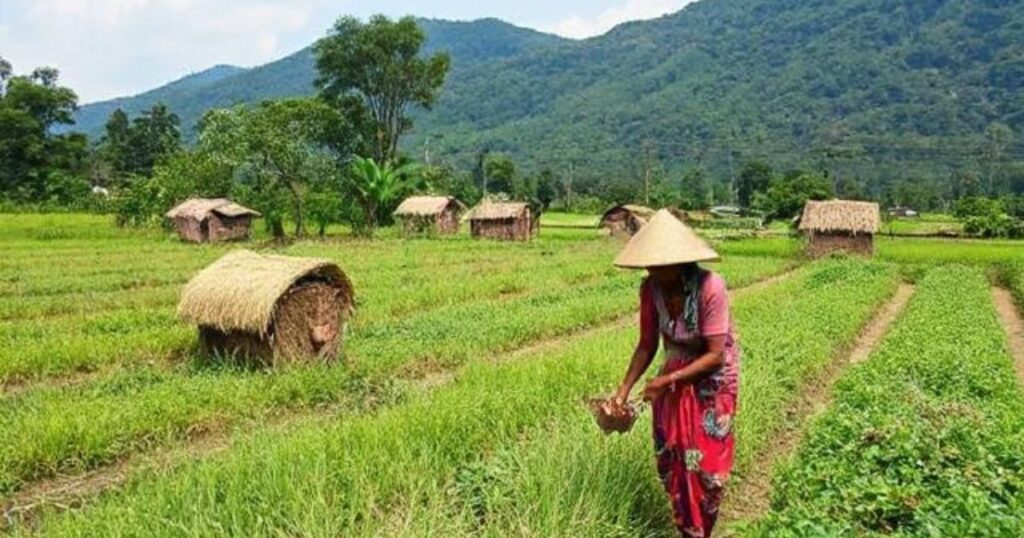 From dawn to dusk, a subsistence farmer’s day is filled with hard work and dedication. Before sunrise, they rise early to tend to their small farm, where crops like maize, beans, or rice grow. They carefully plant seeds, weed the fields, and water the plants using traditional methods. Livestock such as chickens or goats need feeding and care, adding to their responsibilities. Their work is closely tied to the land and seasons, relying on natural weather patterns without modern machinery.
From dawn to dusk, a subsistence farmer’s day is filled with hard work and dedication. Before sunrise, they rise early to tend to their small farm, where crops like maize, beans, or rice grow. They carefully plant seeds, weed the fields, and water the plants using traditional methods. Livestock such as chickens or goats need feeding and care, adding to their responsibilities. Their work is closely tied to the land and seasons, relying on natural weather patterns without modern machinery.
Meals are often prepared from what the farm produces, sustaining the family through modest means. Despite long hours and physical labor, the subsistence farmer’s life is rooted in resilience and connection to nature. Every task is vital for survival, as the harvest feeds the family, and sometimes, any surplus might be traded in the local market. This simple lifestyle reflects patience, perseverance, and a deep respect for the earth.
The Philosophy Behind It
Subsistence farming isn’t just a method—it’s a philosophy. It’s about living in harmony with the environment, being self-sufficient, and cultivating resilience. It teaches Hydroponic Farming For Beginners: A Complete Guide patience, respect for nature, and gratitude for the earth’s bounty.
Getting Started: A Beginner’s Guide

Getting Started: A Beginner’s Guide is the perfect introduction for anyone stepping into a new skill, hobby, or field. Designed with newcomers in mind, this guide simplifies complex concepts into easy-to-understand steps, making the learning journey approachable and enjoyable. Whether you’re diving into technology, creative arts, fitness, or any other area, this guide provides the foundational knowledge you need to build confidence and avoid common pitfalls.
Starting something new can be overwhelming, but this guide breaks down the essentials, from basic terminology to practical tips and resources. It encourages a step-by-step approach, helping you set clear goals and develop good habits from the outset. Alongside useful advice, it also offers motivational insights to keep you inspired when challenges arise. By following this beginner-friendly guide, you’ll gain a solid understanding of the fundamentals, empowering you to progress smoothly toward more advanced skills. It’s about creating a strong base that supports lifelong learning and growth. Whether your goal is personal enrichment or professional development, “Getting Started: A Beginner’s Guide” is your trusted companion for embarking on any new adventure with confidence and clarity.
Conclusion:
Subsistence farming is a testament to humanity’s enduring relationship with the earth. In a rapidly changing world, it offers a blueprint for resilience, sustainability, and self-sufficiency. “Living the Land: A Look at Subsistence Farming” is not just a guide but an invitation to reconnect with nature, honor traditional wisdom, and cultivate a life rooted in purpose and harmony. Whether you choose to adopt it fully or simply incorporate its principles into your daily life, the path of the subsistence farmer has much to teach us all.
FAQ:
What is Subsistence Farming?
Subsistence farming is a type of agriculture where farmers grow crops and raise livestock primarily to feed themselves and their families rather than for commercial sale.
How does Subsistence Farming differ from Commercial Farming?
Subsistence farming focuses on self-sufficiency and small-scale production, whereas commercial farming aims to produce large quantities of crops or livestock for sale and profit.
What are the Common crops grown in Subsistence Farming?
Common crops vary by region but often include staples like maize (corn), rice, beans, potatoes, millet, and cassava.
What tools and Methods are typically used in Subsistence Farming?
Many subsistence farmers use traditional tools like hoes, machetes, and simple plows, relying on manual labor and natural methods such as crop rotation and organic fertilizers.
What Challenges do Subsistence Farmers face?
Challenges include unpredictable weather, limited access to modern tools and technology, pests, soil degradation, and lack of access to markets or financial resources.



